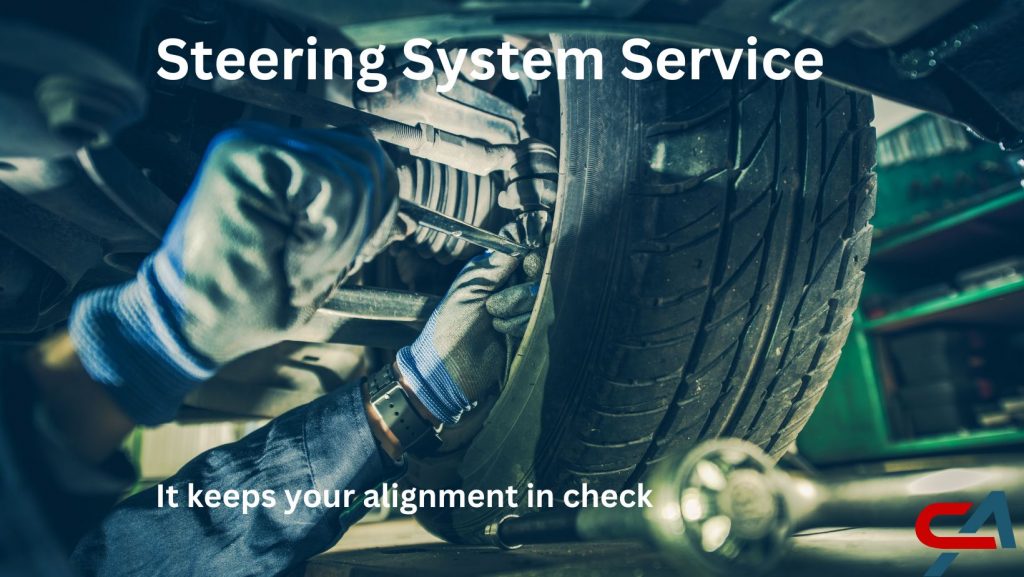Navigating Smoothly: A Comprehensive Guide to Steering Component Service
The steering system is the unsung hero of every journey, allowing you to navigate effortlessly and control the direction of your vehicle. Over time, steering components can undergo wear and tear, impacting the responsiveness and safety of your driving experience. This detailed guide will explore what steering component service entails, why it matters, and how it contributes to maintaining a smooth and secure ride.
Steering Component Service Unveiled: Ensuring Precision in Every Turn
Steering component service is a comprehensive maintenance process that involves inspecting, adjusting, and, if necessary, replacing various components within the steering system. The goal is to ensure optimal functionality, responsiveness, and safety, allowing the driver to control the vehicle easily.
Components Addressed in Steering Component Service: The Anatomy of Control
Power Steering Pump:
The power steering pump generates hydraulic pressure that assists in steering. During service, the pump is inspected for leaks, proper fluid levels, and smooth operation.
Power Steering Fluid:
The condition and level of the power steering fluid are inspected. Top off or replace to maintain proper lubrication and hydraulic pressure if needed.
Steering Gearbox:
The steering gearbox, also known as the steering rack, is a critical component that converts the steering wheel’s rotational movement into lateral movement of the front wheels. The gearbox is inspected for wear and tear, leaks, and proper alignment.
Tie Rods and Ends:
Tie rod ends connect the steering system to the wheels and play a crucial role in steering control. These components are examined for play, wear, and proper alignment.
Ball Joints:
Ball joints connect the steering knuckles to the control arms and allow for the movement of the suspension. During service, ball joints are inspected for wear and tightness.
Steering Couplings:
Steering couplings connect the steering column to the steering gearbox. They are examined for any signs of wear, looseness, or damage.
Steering Column:
The steering column houses the steering wheel and connects it to the steering gearbox. It is inspected for proper alignment, smooth operation, and any indications of damage.
Steering Wheel and Alignment:
The steering wheel and alignment are assessed to ensure proper positioning and responsiveness. Any misalignment issues are addressed during the service.
The Need for Steering Component Service: Prolonging Precision and Safety
Wear and Tear:
Continuous use of the steering system can lead to wear and tear of components over time. Regular service helps identify and address issues before they escalate.
Fluid Contamination:
Power steering fluid can become contaminated with debris and moisture. Regular service includes inspecting and, if necessary, replacing the fluid to maintain proper lubrication.
Preventing Alignment Issues:
Misaligned steering components can lead to uneven tire wear, reduced handling, and compromised safety. Steering component service helps prevent alignment issues.
Ensuring Safety:
Steering is a fundamental aspect of vehicle safety. Routine service ensures that all steering components function correctly, providing a safe and predictable driving experience.
Signs Your Vehicle Needs Steering Component Service: Navigating the Warning Signs
Difficulty Steering:
Suppose steering feels unusually difficult or requires more effort than usual. It may indicate issues with the power steering system or components in that case.
Strange Noises:
Unusual noises, such as clunking, popping, or whining when turning the steering wheel, can indicate problems within the steering system.
Vibration in Steering Wheel:
Vibrations in the steering wheel, especially at certain speeds or while turning, may signal alignment issues or problems with steering components.
Uneven Tire Wear:
Uneven tire wear, particularly on the edges of the tires, can result from misaligned steering components. Regular service helps identify and rectify these issues.
Fluid Leaks:
Visible leaks of power steering fluid on the ground or under the vehicle indicate that there may be issues with seals or components within the steering system.
Off-Center Steering Wheel:
An off-center steering wheel, which is not straight when the vehicle moves in a straight line, can indicate alignment or steering component problems.
Service Intervals: Timing the Maintenance of Precision
The frequency of steering component service can vary based on factors such as driving conditions, vehicle age, and manufacturer recommendations. It is advisable to consult your vehicle’s owner’s manual for specific guidelines on service intervals.
DIY vs. Professional Steering Component Service: Making the Right Choice
While some vehicle owners may attempt essential inspections and fluid checks, a comprehensive steering component service is best left to professional technicians. Trained experts can identify nuanced issues, perform accurate diagnostics, and ensure all components are correctly adjusted or replaced.
Benefits of Steering Component Service: Driving with Confidence
Responsive Steering:
Regular service ensures that steering components operate smoothly, providing responsive and precise vehicle control.
Improved Handling:
Well-maintained steering components contribute to improved handling, stability, and maneuverability.
Enhanced Safety:
A properly functioning steering system is integral to vehicle safety. Service helps identify and address potential issues before they compromise safety.
Extended Component Lifespan:
Timely service prevents premature wear of steering components, contributing to their longevity and reducing the risk of unexpected failures.
Alignment Maintenance:
Steering component service helps maintain proper wheel alignment, preventing uneven tire wear and ensuring a smooth ride.
Manufacturer Recommendations: Adhering to Service Intervals for Optimal Performance
To ensure the ongoing precision and safety of your vehicle’s steering system, it is crucial to adhere to the service intervals recommended by the manufacturer. Following these guidelines helps maintain optimal performance and prolong the lifespan of steering components.
Your vehicle’s steering system is pivotal in ensuring a smooth and controlled driving experience. Steering component service is a proactive approach to maintaining the precision and safety of this critical system. By understanding the components addressed in steering component service, recognizing signs that your vehicle may need it, and adhering to manufacturer recommendations for service intervals, you can confidently navigate the roads, knowing that your vehicle’s steering is in optimal condition.

